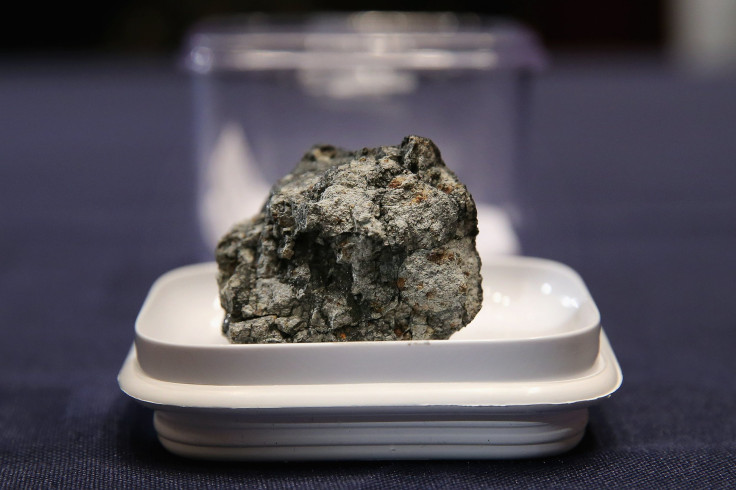Mars 2020: NASA Returning Martian Meteorite To Red Planet Using Perseverance Rover
KEY POINTS
- The SaU 008 meteorite formed on Mars 450 million years ago
- SaU 008 will return to Mars through NASA's Mars 2020 mission
- The meteorite will assist the Perseverance rover's sample-collection assignment
NASA will return a meteorite to the Red Planet during its upcoming Mars 2020 mission. The ancient Martian meteorite will assist NASA’s Perseverance rover in its sample-collection assignment.
The meteorite, dubbed as Sayh al Uhaymir 008 or SaU 008, was stored at the Natural History Museum (NHM) in the United Kingdom. After studying its composition, scientists found that it formed on Mars around 450 million years ago.
They believe that the meteorite was thrown off the Red Planet after an impact event hundreds of thousands of years ago. The scientists think the meteorite found its way to Earth about a thousand years ago.
“This little rock's got quite a life story,” Caroline Smith, head of the Earth Sciences Collections at London’s Natural History Museum, told BBC. “It formed about 450 million years ago, got blasted off Mars by an asteroid or comet roughly 600,000-700,000 years ago, and then landed on Earth; we don't know precisely when but perhaps 1,000 years ago. And now it's going back to Mars.”
After spending time on Earth, the meteorite will now return to its home planet. It will travel to Mars through NASA’s Mars 2020 mission, which is scheduled to launch on Thursday via the ATLAS V 541 rocket. The meteorite will be brought back to the surface of Mars by the Perseverance rover.
However, the rover will not return the entire meteorite. It will keep a small part of SaU 008 on its Scanning Habitable Environments with Raman and Luminescence for Organics and Chemicals (SHERLOC) instrument. This spectrometer uses a laser to analyze Martian rocks to look for traces of chemical and organic matter.
The samples that will be analyzed by Perseverance’s SHERLOC instrument on Mars will then be compared to the composition of the SaU 008 fragment. Doing so will enable the rover to gather accurate data on potential samples.
“I'm so excited to be working with colleagues at NASA on missions that will help our understanding of Mars and the rest of the solar system,” Smith said in a statement. “That aim also fits in with the Museum's scientific research, as we are using Martian meteorites to study the surface of the planet.”

© Copyright IBTimes 2024. All rights reserved.





















